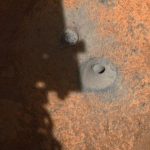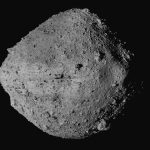Jupiter’s intense auroras superheat its upper atmosphere0
- From Around the Web, Space
- August 17, 2021
Heat spawned by high-speed charged particles slamming into the air above the poles spreads far

Heat spawned by high-speed charged particles slamming into the air above the poles spreads far

Whose job is it to take out the trash when the ISS is retired?

Astudy has found that exoplanets orbiting red dwarf stars may not be as badly affected by stellar radiation as scientists had previously suspected.

Perseverance tried to extract a core sample from a rock, but Mars didn’t play nice.

The agency’s lunar-grade astronaut suits are behind schedule, an inspector general report says

The good news is that scientists have a better handle on asteroid Bennu’s whereabouts for the next 200 years. The bad news is that the space rock has a slightly greater chance of clobbering Earth than previously thought.

WAS THE GALE CRATER AN ANCIENT LAKE — OR A SERIES OF TINY PONDS?

A team of geologists have discovered a billion-year-old supercontinent hiding underneath New Zealand.

Scientists are using infrared to better explore Jupiter’s moon Ganymede, the largest moon in our solar system.

“It makes perfect sense,” one official who is currently advising the military on the issue said, noting that Space Force’s responsibilities are more global than the other branches of the military, which gives U.S. Space Command access to advanced surveillance technologies.